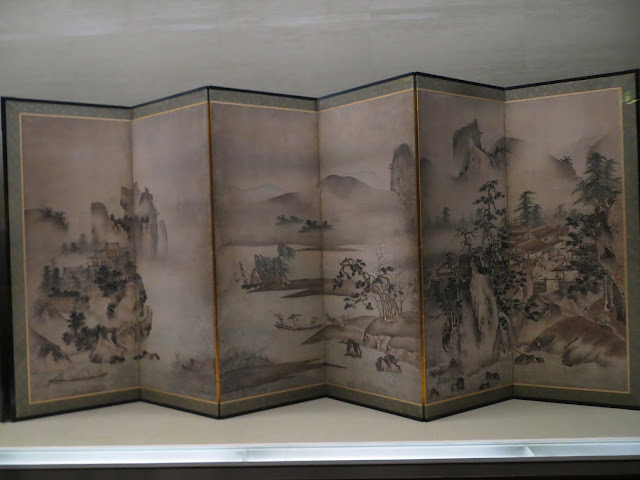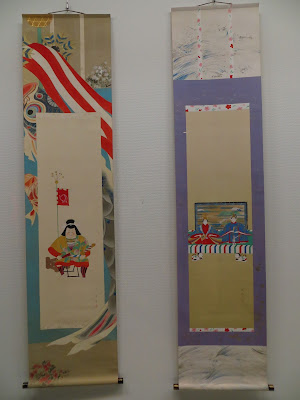So in order to indulge my nostalgia, here's a list of Japan highlights I haven't written about yet :)
1. Cherry Blossoms
 |
| Hanami in Hiroshima |
Japan's cherry blossoms are famous world-wide and I am so happy that I managed to time my trip so that I was there for cherry blossom season. The perfect time to see cherry blossoms varies from place to place, and full-bloom only lasts for a few days at a time, but I managed to see more than my fair share of sakura. But what makes the cherry blossoms so special is the Japanese reaction to them. While the Japanese tend to be more quiet and reserved in public, where there's a cherry tree, there's a group of ecstatic Japanese people beneath it, drinking and laughing.
The act of viewing cherry blossoms is called hanami, and is a national pastime. People bring tatami mats or blue canvas sheets outside with plentiful picnics and celebrate en masse. There are public parties in parks and gardens where the cherry trees are lit up and there are street food stalls lining the paths. I was lucky enough to stumble upon two such celebrations, one in the famous Kenruko-en garden in Kanazawa and one in Muroyama park in Kyoto, which my friend Rosie found. Muroyama park was especially amazing, with people sitting on tatami mats eating and drinking as far as the eye could see!
 |
| Muroyama Park |
2. Miyajima Island
Lauded as one of the "Three Most Scenic Spots of Japan" I had high expectations for Miyajima Island. I had been promised charming free roaming deer and a mystical floating torii gate out on the water. I was initially very disappointed... the charming deer were scabby, dirty and tried to eat my travel guide, while crowds of other tourists marred my view of the "floating" gate. Eventually I was herded into the Itsukushima Shrine. The bright orange shrine was first built in 593, is supported on stilts to protect it from water at high tide, and is dedicated to three goddesses, one of which is worshipped as the deity of traffic safety.
I tried to make the most of things and amused myself by "ironically" taking pictures of other tourists getting photos in front of the floating gate from the shrine's outcropping pier. As if sensing my lack of appreciation, the goddesses of the sea, fortune and traffic safety sent me not one but two traditional Japanese wedding parties to prove me wrong and inspire some amazement and enthusiasm! The brides were beautiful, with elaborate hairstyles and dressed in colourful kimonos. Both couples had a bossy professional woman fluttering around them for at least 20 minutes adjusting minute details before the photoshoot could start. I joined the other tourists and excitedly, and non-ironically, took as many pictures as I could!
I tried to make the most of things and amused myself by "ironically" taking pictures of other tourists getting photos in front of the floating gate from the shrine's outcropping pier. As if sensing my lack of appreciation, the goddesses of the sea, fortune and traffic safety sent me not one but two traditional Japanese wedding parties to prove me wrong and inspire some amazement and enthusiasm! The brides were beautiful, with elaborate hairstyles and dressed in colourful kimonos. Both couples had a bossy professional woman fluttering around them for at least 20 minutes adjusting minute details before the photoshoot could start. I joined the other tourists and excitedly, and non-ironically, took as many pictures as I could!
As if that were't enough, my favourite goddesses sent a deer walking into my picture just as I was about to leave the shrine. Needless to say, I didn't leave and instead tried to follow the deer's path as it walked through the stilts under the shrine's walkways. Of course, all my ducking and peering earned me plenty of strange looks from passers by!
3. Nara Dreamland
On the day Rosie arrived in Japan to join me, we went to see the abandoned Nara Dreamland themepark which closed in 2006 and was inspired by Disneyland California. I definitely prefer abandoned theme parks to running ones! There are no queues, no screaming children, no overpriced fast-food restaurants, and very few other people... a misanthropist's ideal day out. It was very atmospheric and eery. Everything had been just left there and was rusty and overgrown. It was like looking into some post-apocalyptic future where nature was reclaiming it's territory... should I worry that I preferred it like that?!
4. Himeji castle
Himeji castle was stunningly beautiful, like a fairy tale palace a little girl (me!) wants to live in for ever. It dates back to 1333 and incredibly survived extensive bombing during WW2 and a massive earthquake in 1995. The interior isn't beautifully decorated like most castles in Europe would be, it's main function was military and defensive. Unfortunately, that's about all I can tell you about the castle, because our volunteer guide, while clearly very nice and friendly, was impossible to understand. I'm sure you can imagine our horror when we realised that we could barely pick out individual words from his steady stream of commentary, only after agreeing to let him guide us around the entire castle. Like good Brits, we nodded and smiled the entire time while screaming on the inside. But it was still a very beautiful castle.
5. Geisha spotting in Kyoto
While I was catching up with writing my blog, Rosie discovered the geisha district in Gion which was just around the corner from our hostel in Kyoto. She came back to get me and we had a lot of fun hanging around the streets and looking out for real geisha running between houses from one appointment to the next. Real geisha are incredibly rare in Japan, and are mainly reserved for the entertainment of the wealthy (outside of occasional spring dances in public - unfortunately I didn't manage to see any!) I met some tourists in Tokyo convinced that they had just seen a geisha, and I didn't have the heart to tell them it was just another Chinese tourist who had rented a kimono for the day.
 |
| Blurry picture of a geisha I saw |
6. My last night
At the end of our trip, Rosie and I stayed in an airbnb in Osaka. Our room was in a building called Happiness 3, and the owners really lived up to that name! We met Kazuma, his fiance and two of his friends for dinner on our last night. They took us to a great restaurant, where the tables are all in separate booths separated by light coloured screens and sliding doors. I had the most amazing meal that night, with plenty of hot sake. They ordered lots of food to share, we had sashimi, tempura, sushi, chicken, octopus and so much more! Our hosts were really fun to talk to and we laughed a lot - it was great finally being with the locals in the private booth instead of sitting at the bar and randomly pointing at things because I couldn't read the menu (although that does hold its own appeal!) All in all, an amazing last evening.


































